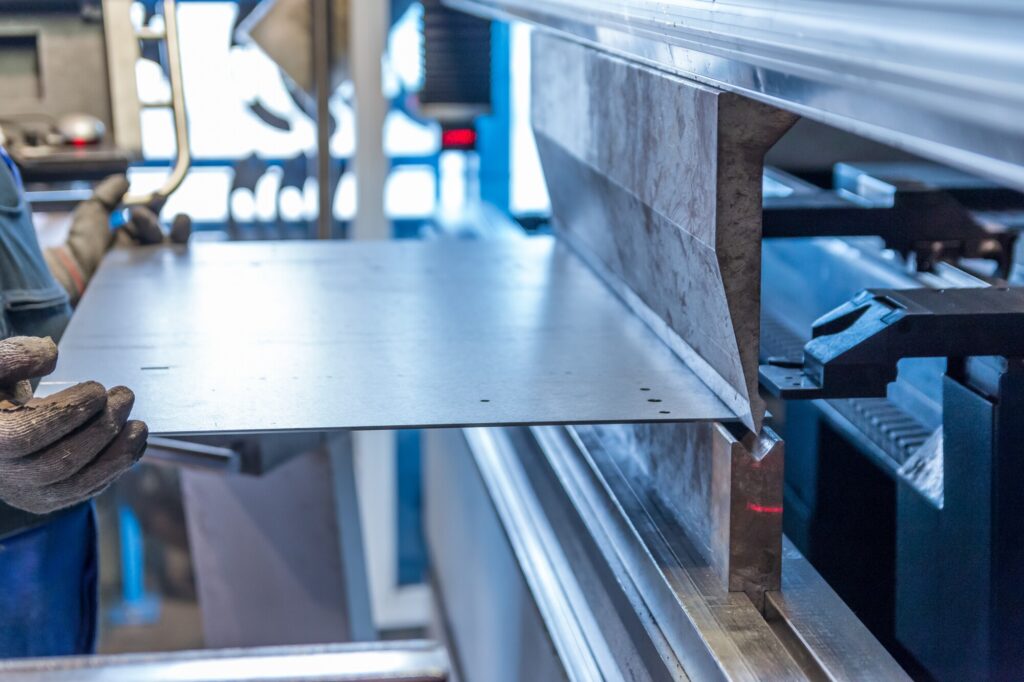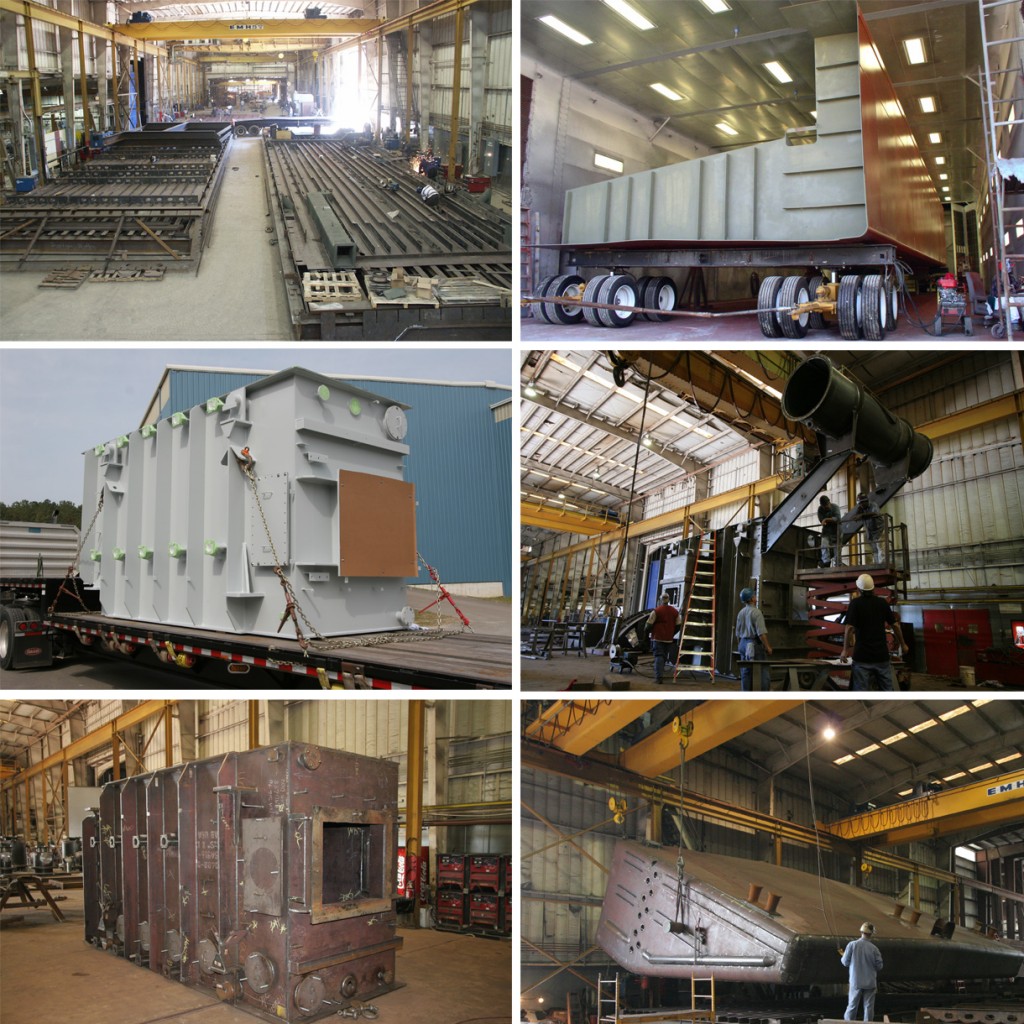Steel Fabrication Melbourne: Workmanship Fulfills Development
Wiki Article
Innovative Fads in Steel Construction: Enhancing Durability and Precision
In the world of steel fabrication, the pursuit of sturdiness and precision has actually caused a wave of innovative fads that are improving the market. From improvements in welding innovations to the assimilation of robotic automation in construction procedures, the landscape of steel production is evolving rapidly. High-strength alloy development, paired with the application of 3D modeling and simulation software, is pushing the limits of what is attainable in terms of structural integrity and precision. In addition, the growing emphasis on lasting methods in steel manufacturing is not just driving performance however likewise cultivating an extra ecologically aware strategy to construction. These trends are not simply forming the here and now however additionally preparing for the future of steel fabrication, promising more improvements in durability and accuracy.Advanced Welding Technologies
In the realm of steel construction, the adoption of sophisticated welding innovations has actually substantially reinvented the industry's technique to achieving remarkable quality and accuracy in architectural welds. Advanced welding modern technologies, such as laser beam of light welding and rubbing stir welding, have arised as game-changers in the field. By leveraging these innovative welding strategies, steel fabricators can elevate the longevity, toughness, and accuracy of their structural welds, fulfilling the increasingly demanding needs of modern-day building and construction jobs.Robotic Automation in Manufacture
Accepting robot automation has actually become a foundation of modern-day steel manufacture practices, simplifying procedures and boosting effectiveness across the sector. Robots are transforming the way steel parts are manufactured, providing exceptional precision and speed while reducing human error. These automated systems can deal with repeated jobs with consistent precision, resulting in higher quality final product.One key advantage of robot automation in steel construction is the capability to function around the clock without exhaustion, significantly enhancing manufacturing result. This constant procedure reduces downtime and accelerates job timelines, inevitably saving expenses for manufacturers. Furthermore, robots can be programmed to perform elaborate tasks that might be challenging or dangerous for human employees, enhancing safety in the work environment.
In addition, robotic automation makes it possible for seamless assimilation with various other digital modern technologies, such as computer-aided layout (CAD) software and Web of Things (IoT) systems (metal fabrication melbourne). This interconnected strategy enhances interaction between various stages of manufacture, enhancing workflows and making certain real-time surveillance and control. As the steel fabrication sector continues to progress, robot automation attracts attention as a transformative force driving effectiveness and accuracy in making procedures

High-Strength Alloy Development
The improvement of high-strength alloy advancement in steel construction is reshaping the industry's strategy to enhancing material longevity and performance. High-strength alloys are engineered to exhibit exceptional mechanical residential or commercial properties, such as boosted tensile strength, toughness, and corrosion resistance contrasted to conventional steel grades. By including these innovative alloys right into fabrication procedures, manufacturers can generate components that hold up against higher stress and anxiety degrees and rough atmospheres, bring about even browse around this site more dependable and resilient output.One key benefit of high-strength alloy advancement is the capability to minimize product density without endangering architectural integrity. This not only leads to lighter-weight components yet additionally adds to set you back financial savings and enhanced performance in manufacture and assembly processes. Additionally, the improved strength-to-weight proportion of these alloys enables for the design and building of structures with greater load-bearing capabilities while minimizing general weight.
3D Modeling and Simulation Software
Improvements in steel fabrication procedures have been substantially propelled by the combination of click resources cutting-edge 3D modeling and simulation software application devices. These tools permit producers to create in-depth virtual designs of their tasks, enabling them to picture the end product with accuracy prior to any manual labor begins. By imitating different stress and anxiety factors, ecological problems, and architectural lots, makers can optimize styles for boosted resilience and performance. In addition, 3D modeling and simulation software application enhance the manufacturing process by identifying prospective concerns at an early stage, minimizing the need for expensive rework and lessening product waste.
Lasting Practices in Steel Manufacturing
Incorporating lasting practices right into steel production procedures is crucial for decreasing environmental influence and making sure long-term resource schedule. One vital lasting practice is the adoption of energy-efficient modern technologies to decrease greenhouse gas exhausts during the steel manufacturing process. This consists of using sustainable power sources, such as solar or wind power, to power steel plants and implementing energy-efficient equipment to optimize energy visit this site right here use.Another important facet of sustainable steel manufacturing is the liable sourcing of resources. This includes ensuring that the iron ore and other resources utilized in steelmaking are gotten from ethical and eco-friendly sources. By promoting openness in the supply chain and sticking to rigorous ecological requirements, steel manufacturers can minimize the negative effects of source removal on local communities and neighborhoods.

Final Thought
In conclusion, the innovative trends in steel construction such as sophisticated welding innovations, robotic automation, high-strength alloy growth, 3D modeling and simulation software program, and sustainable practices are enhancing the resilience and precision of steel items. These developments are transforming the steel manufacture market by enhancing effectiveness, sustainability, and top quality. It is clear that the future of steel fabrication hinges on accepting these advanced modern technologies to satisfy the needs of contemporary construction and production sectors.In the world of steel fabrication, the quest of resilience and accuracy has led to a wave of cutting-edge patterns that are reshaping the market.In the realm of steel construction, the adoption of cutting-edge welding technologies has actually significantly reinvented the industry's technique to attaining premium high quality and accuracy in structural welds. As the steel construction sector continues to evolve, robotic automation stands out as a transformative force driving effectiveness and accuracy in manufacturing processes.
Moreover, recycling and recycling steel scrap and waste materials play a considerable function in boosting the sustainability of steel production. metal fabrication melbourne.In final thought, the cutting-edge trends in steel construction such as sophisticated welding technologies, robot automation, high-strength alloy advancement, 3D modeling and simulation software program, and sustainable methods are improving the longevity and accuracy of steel products
Report this wiki page